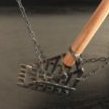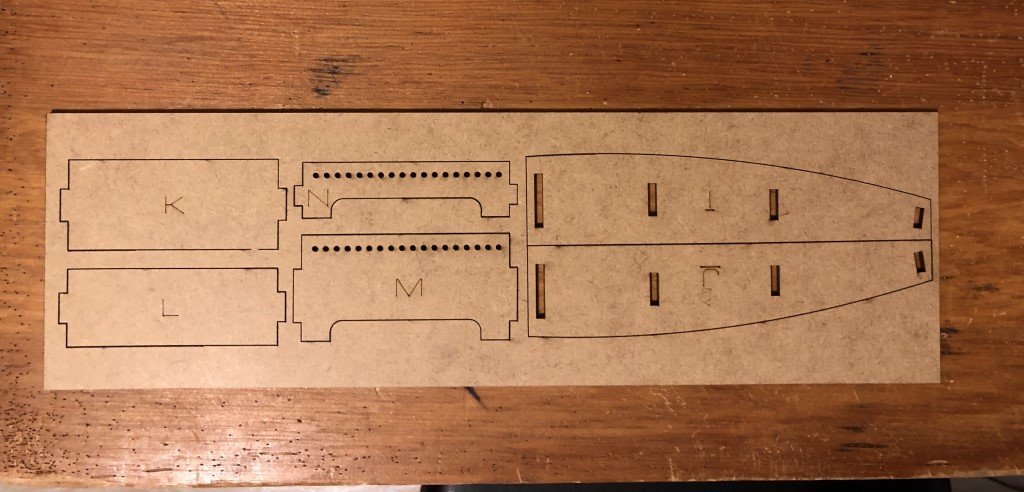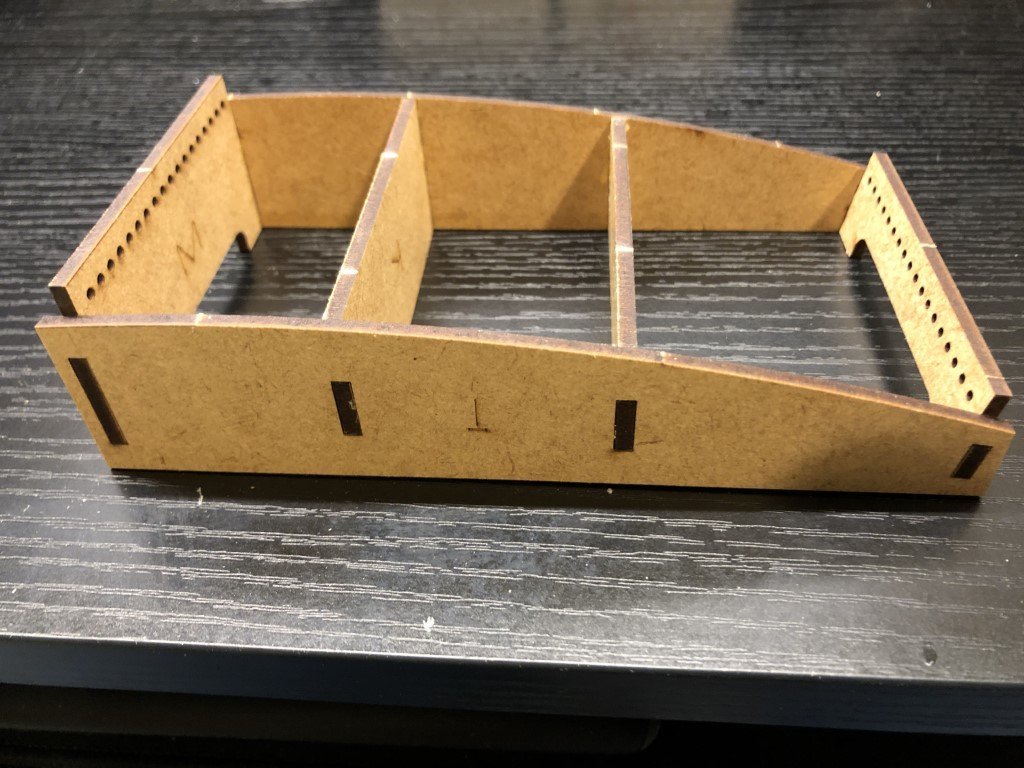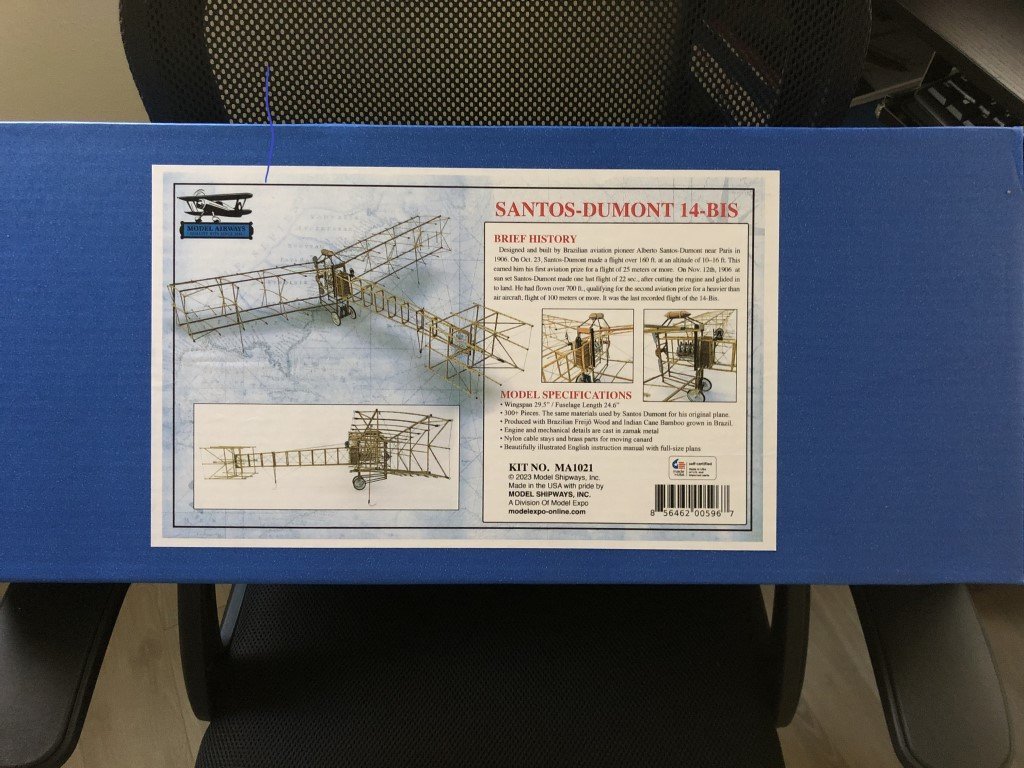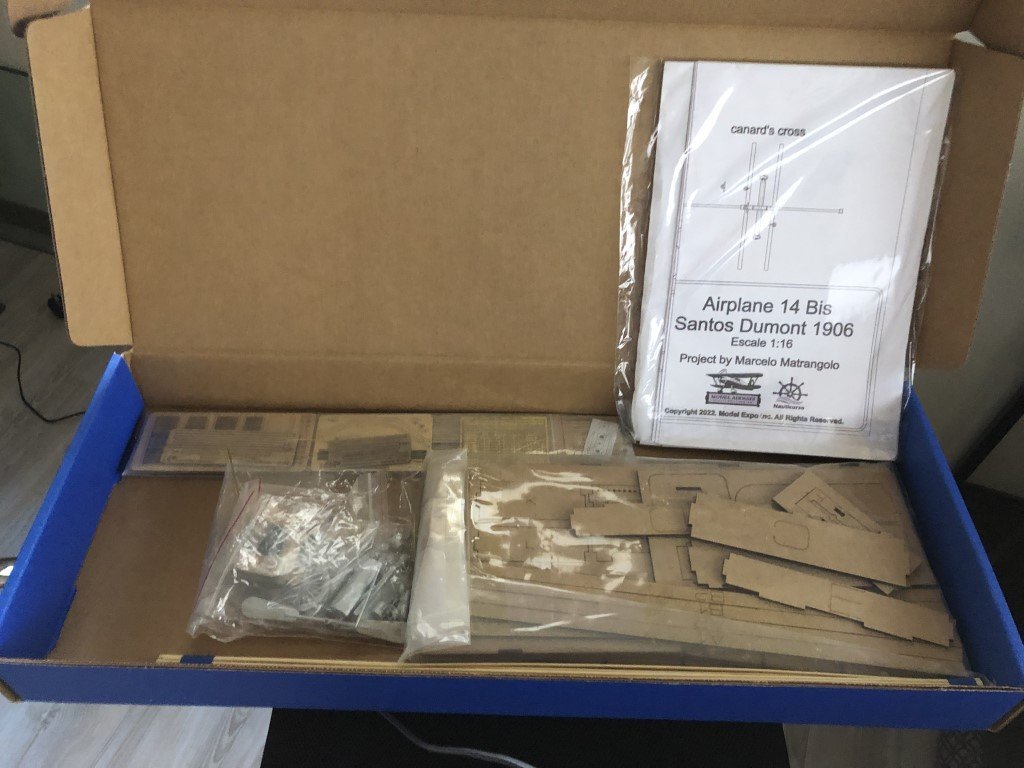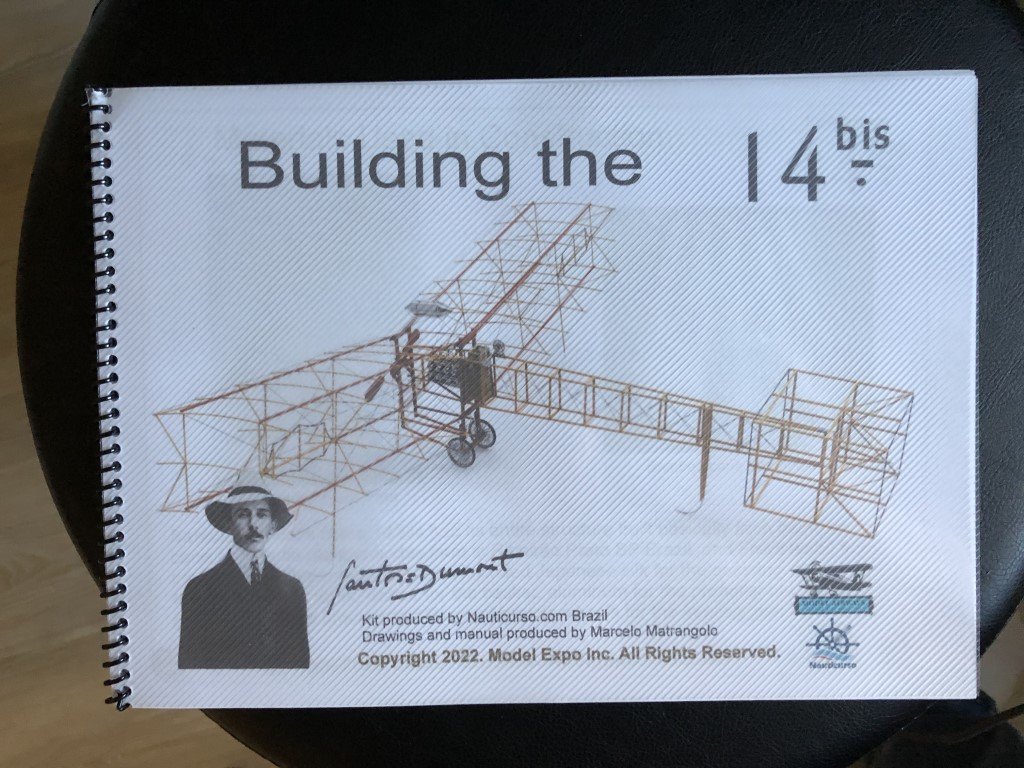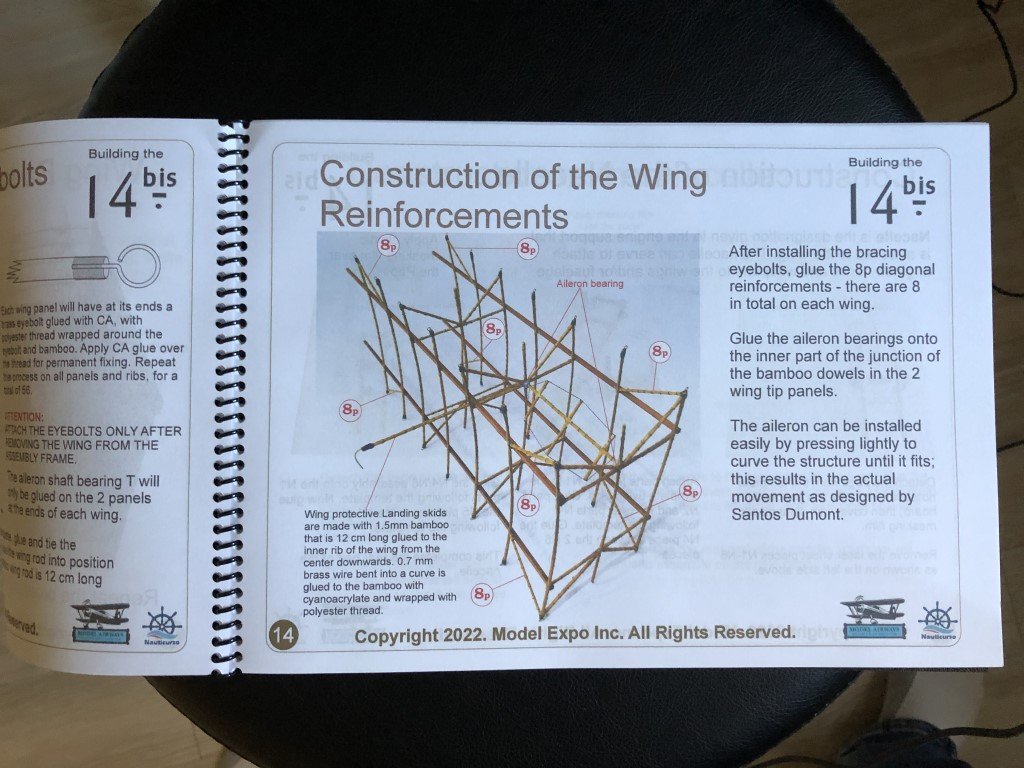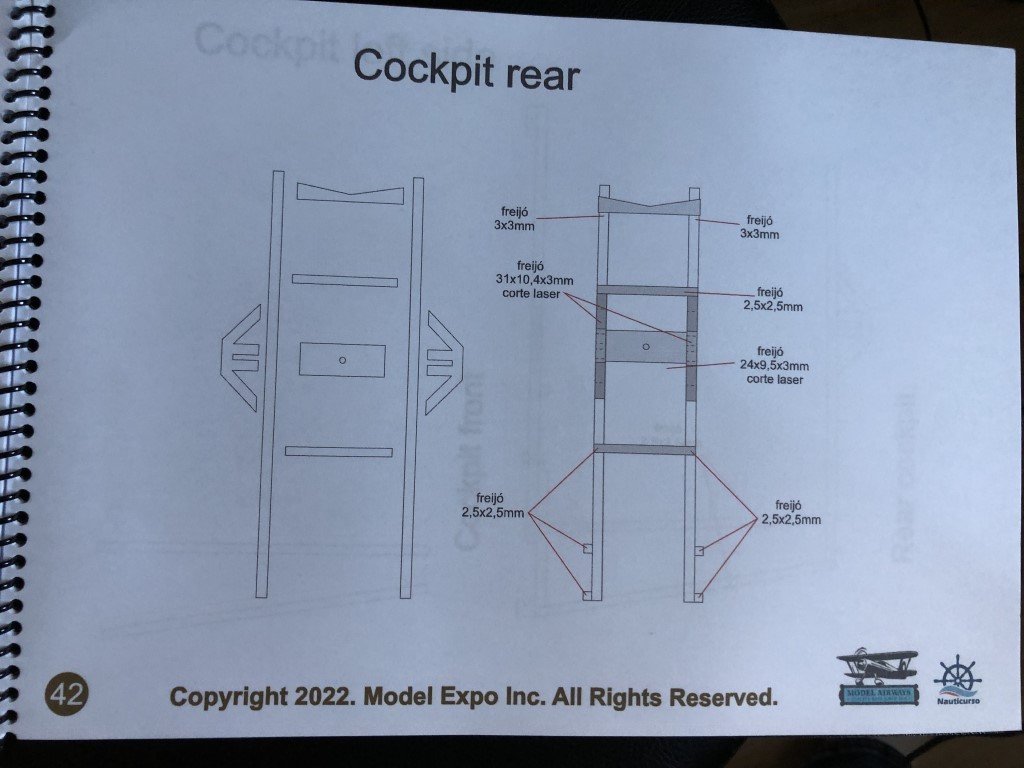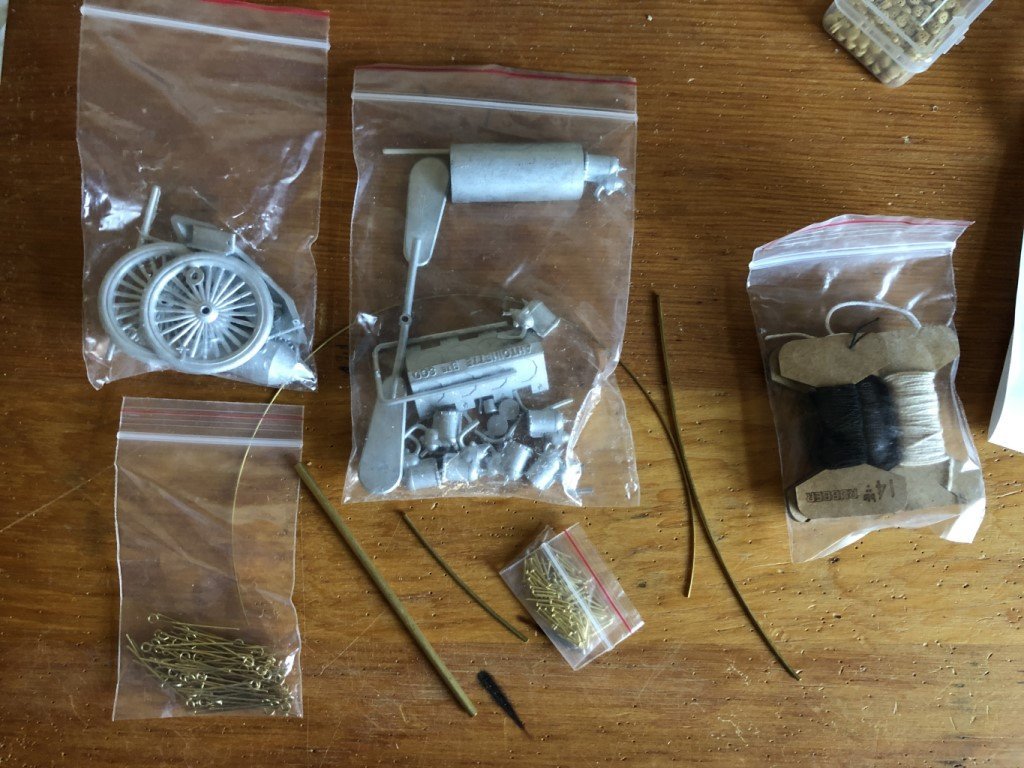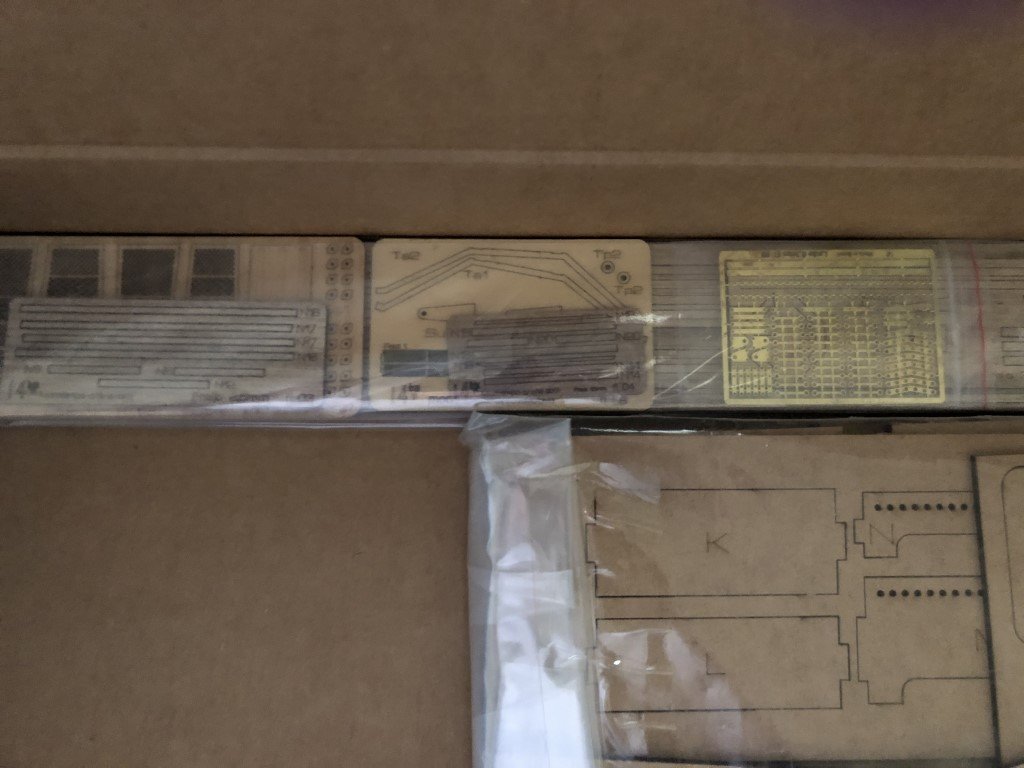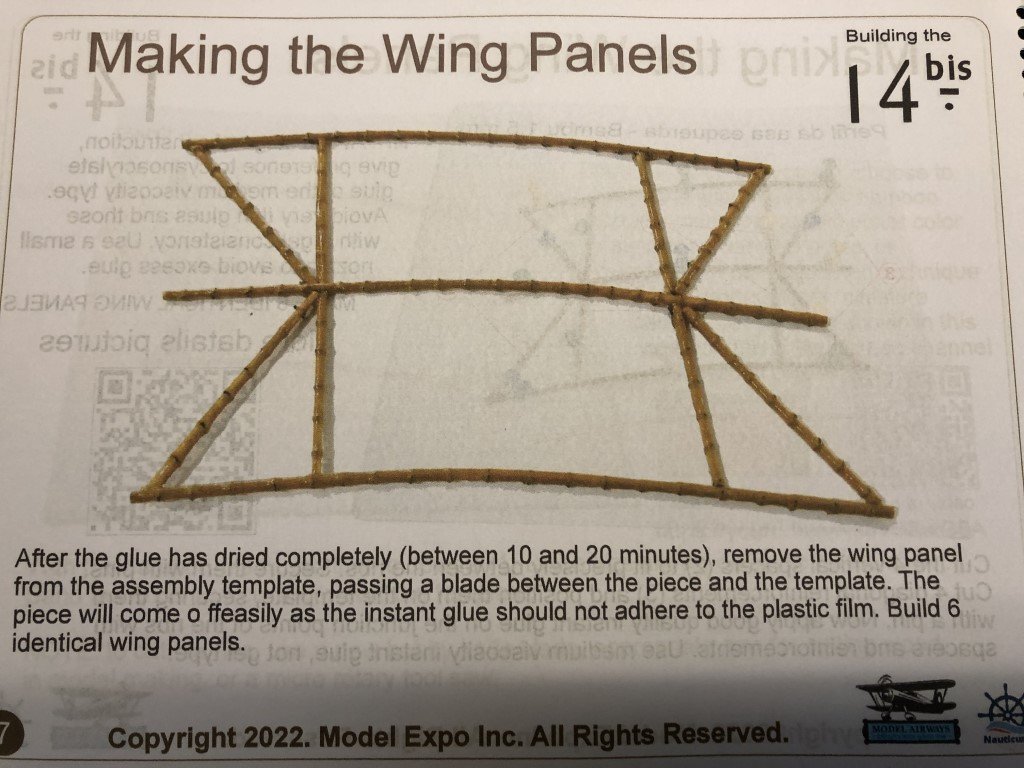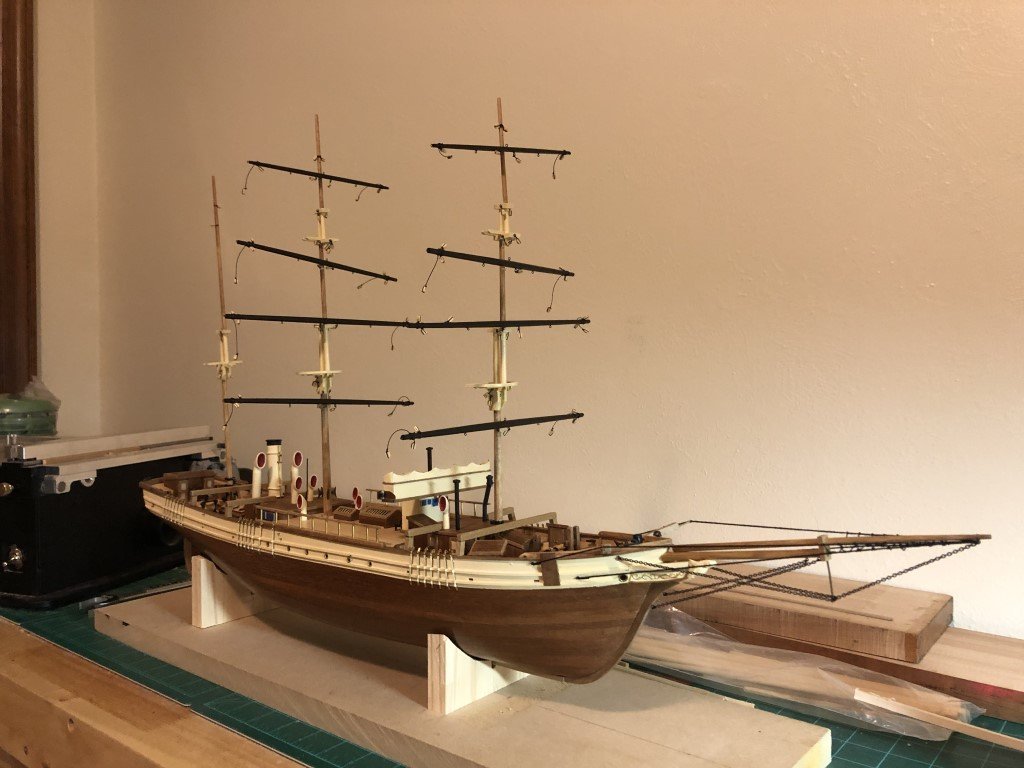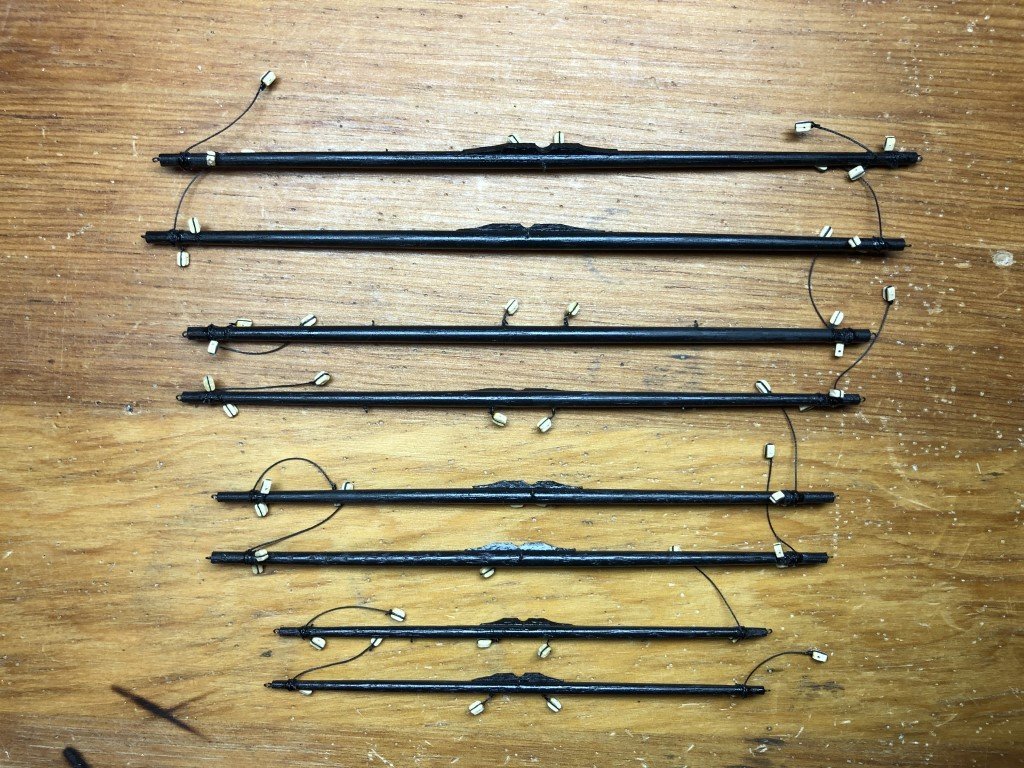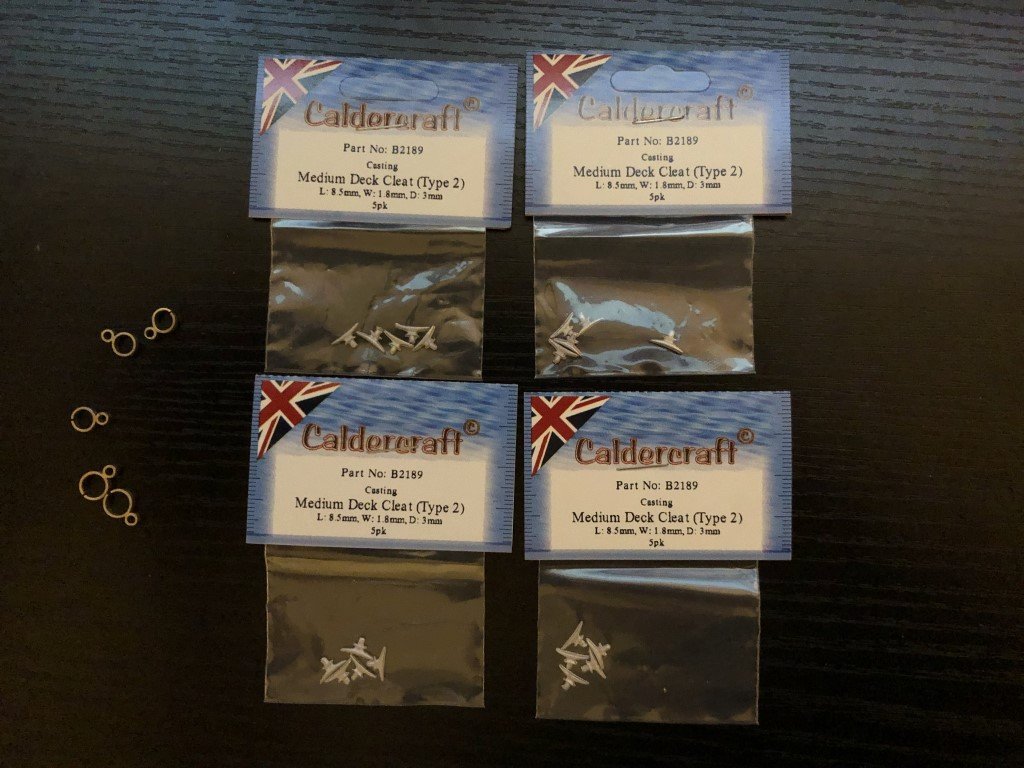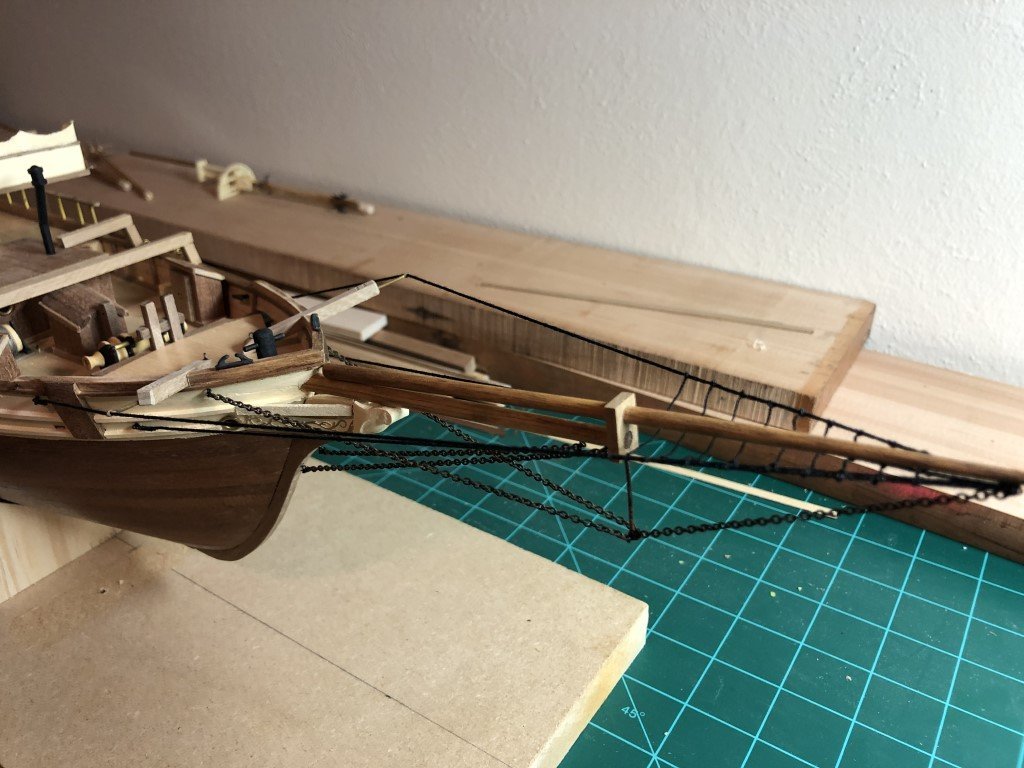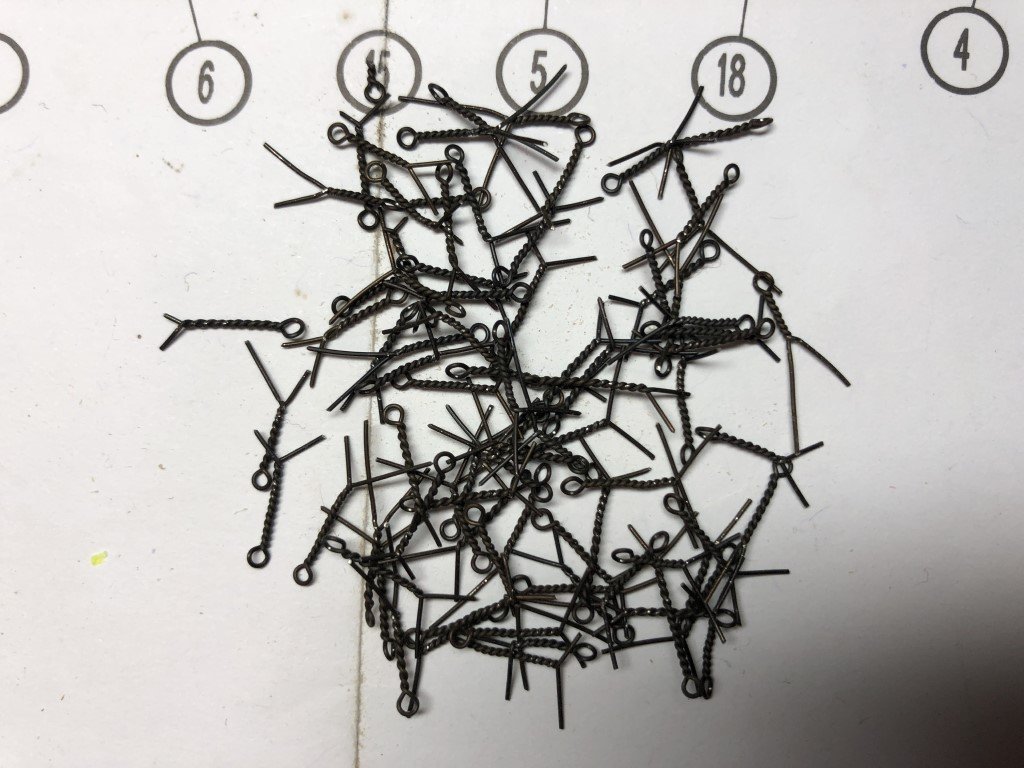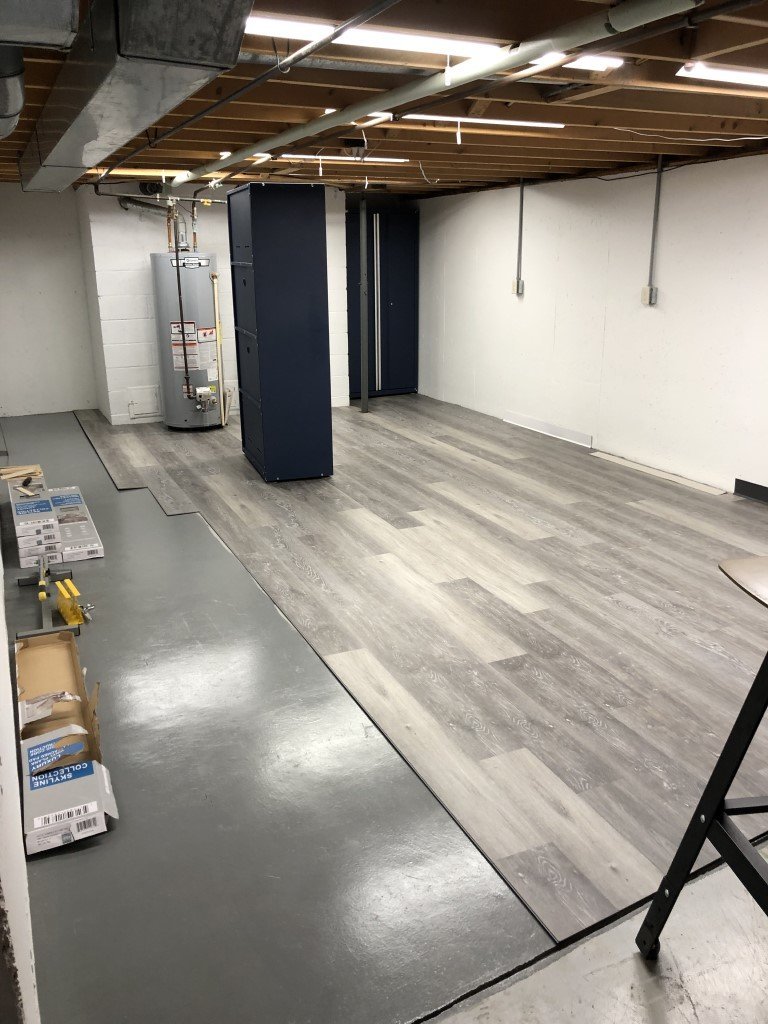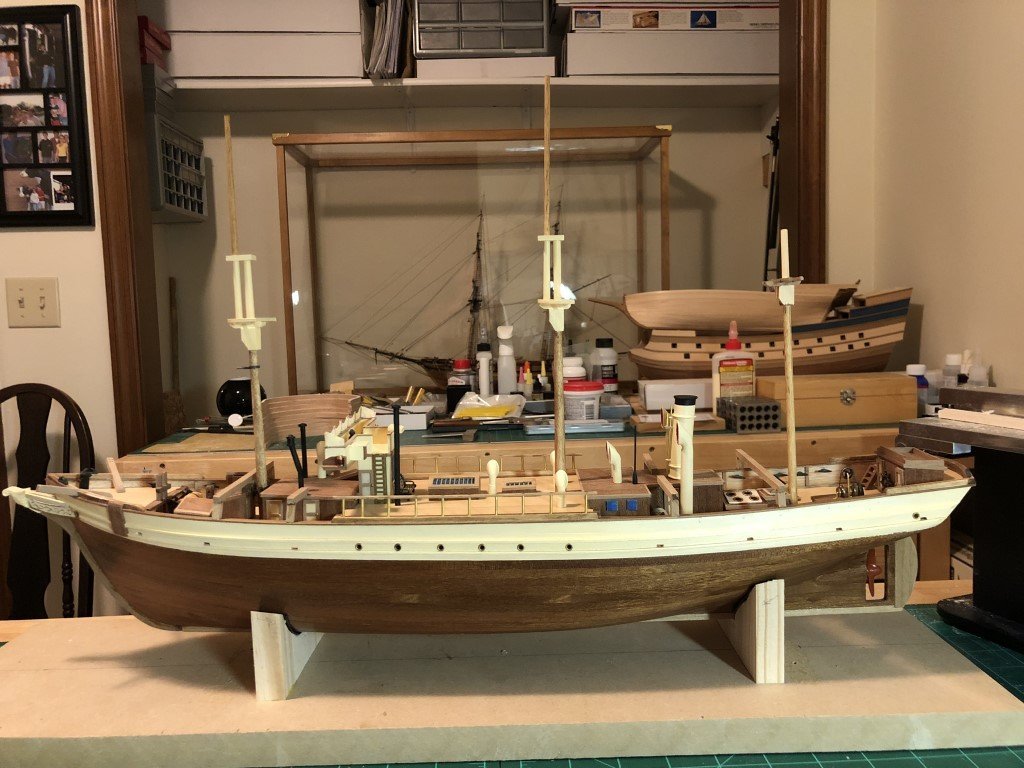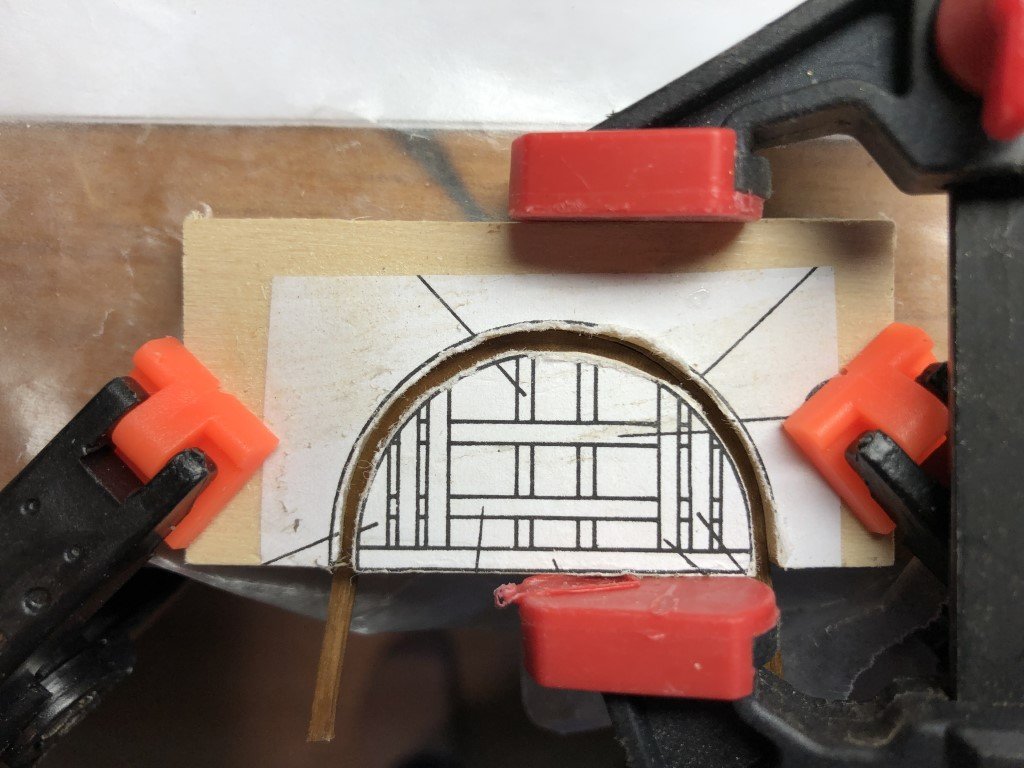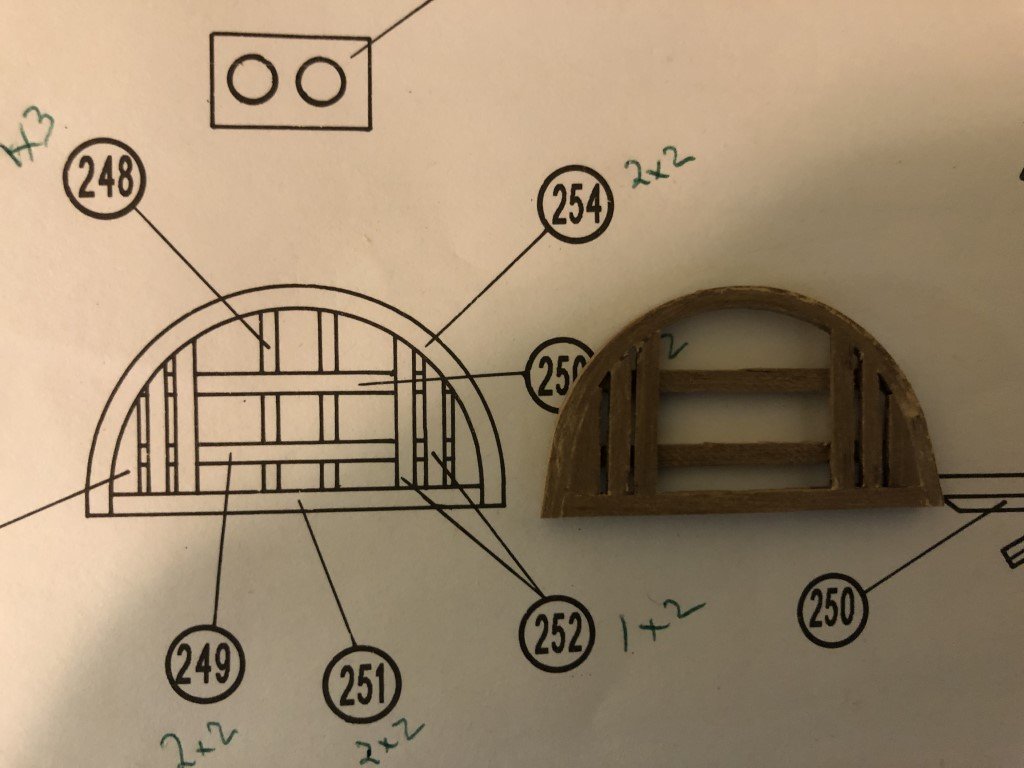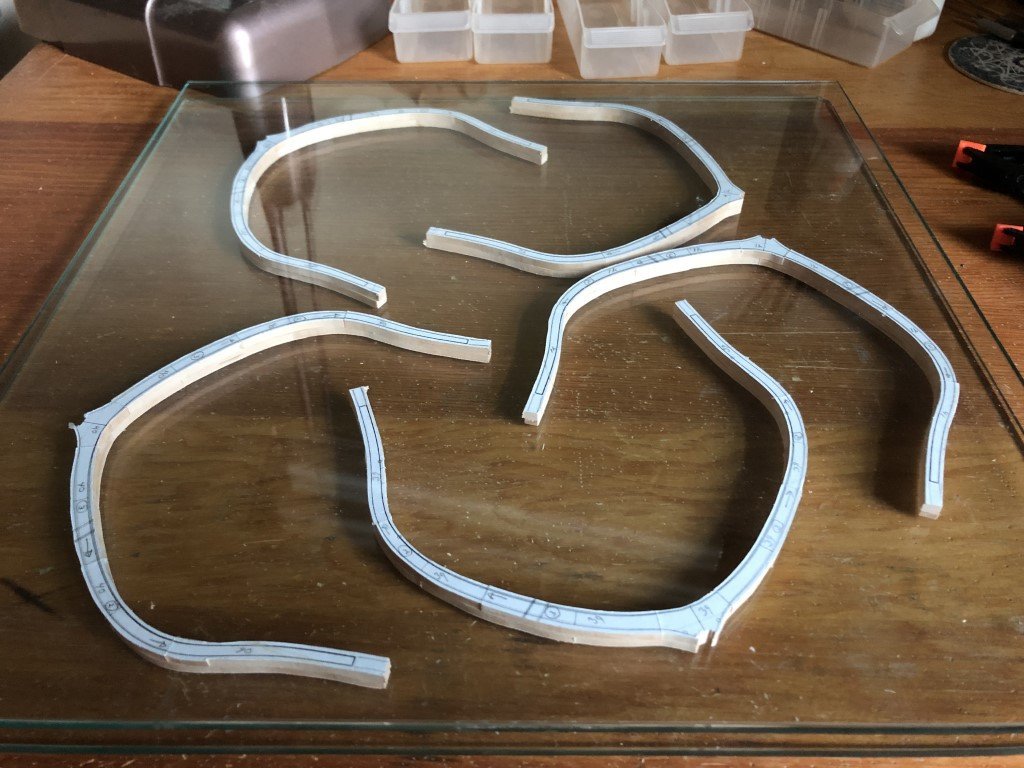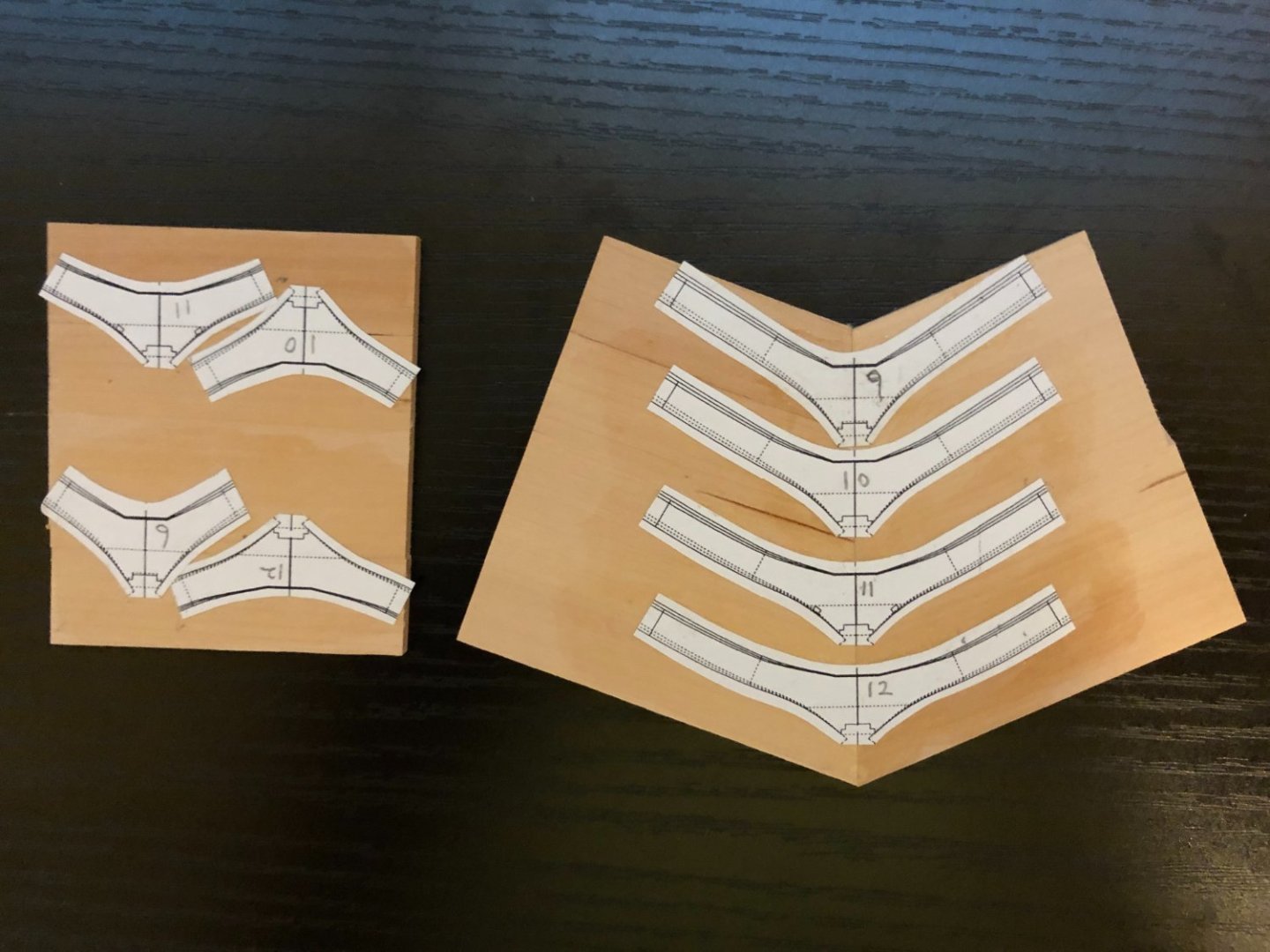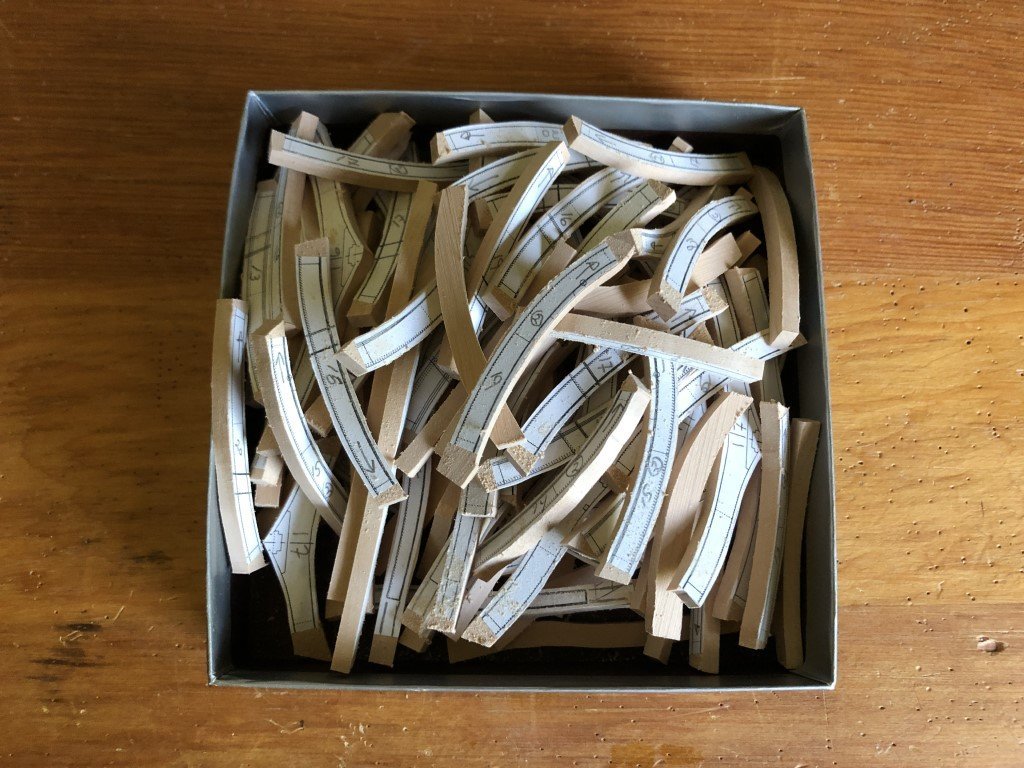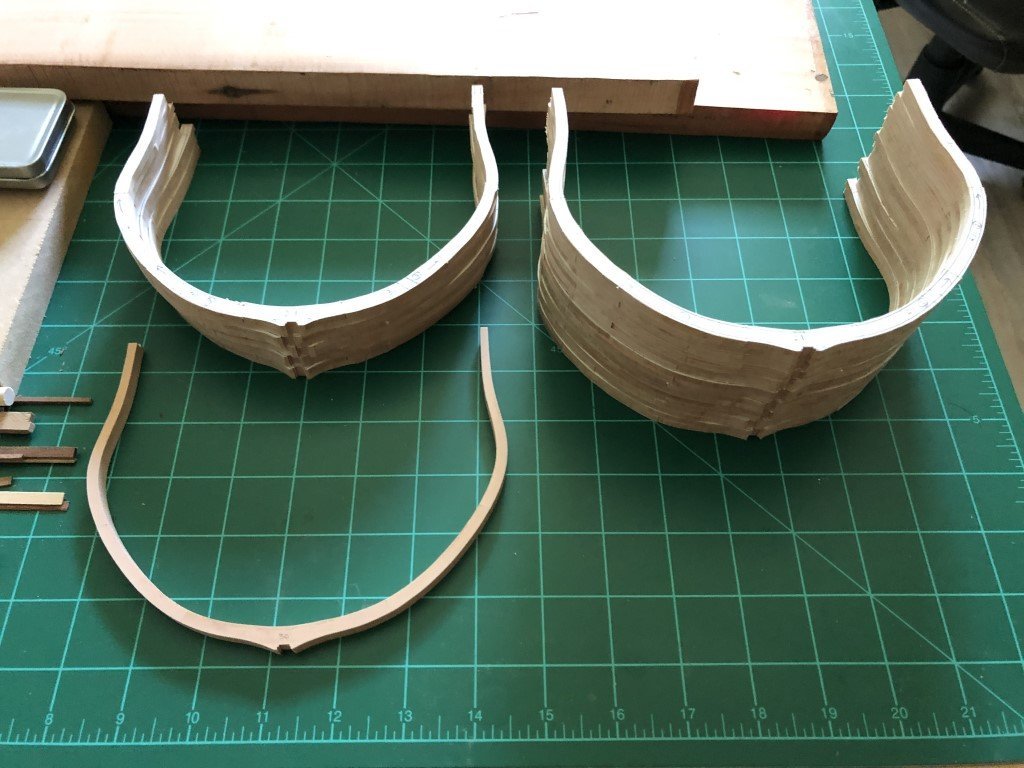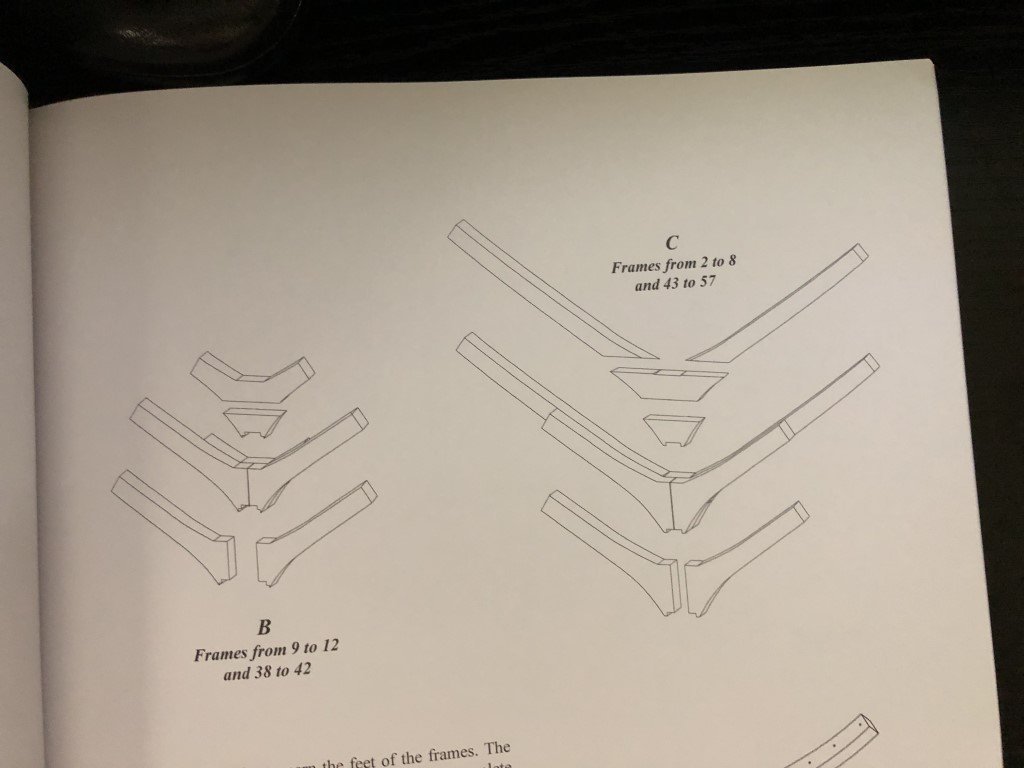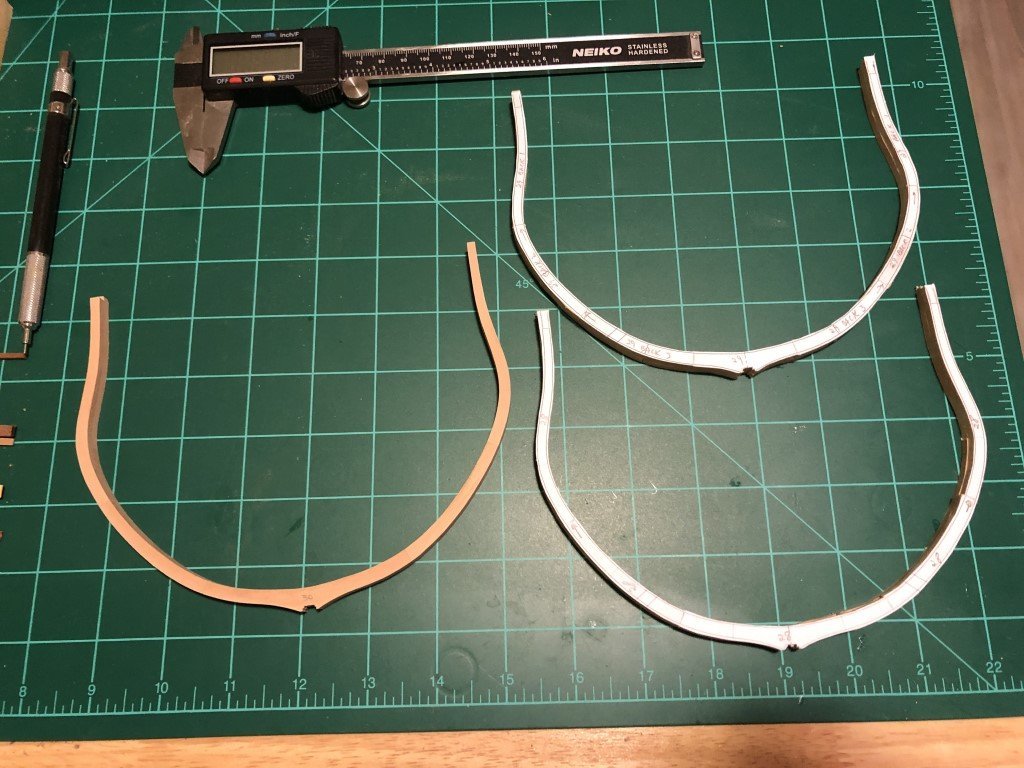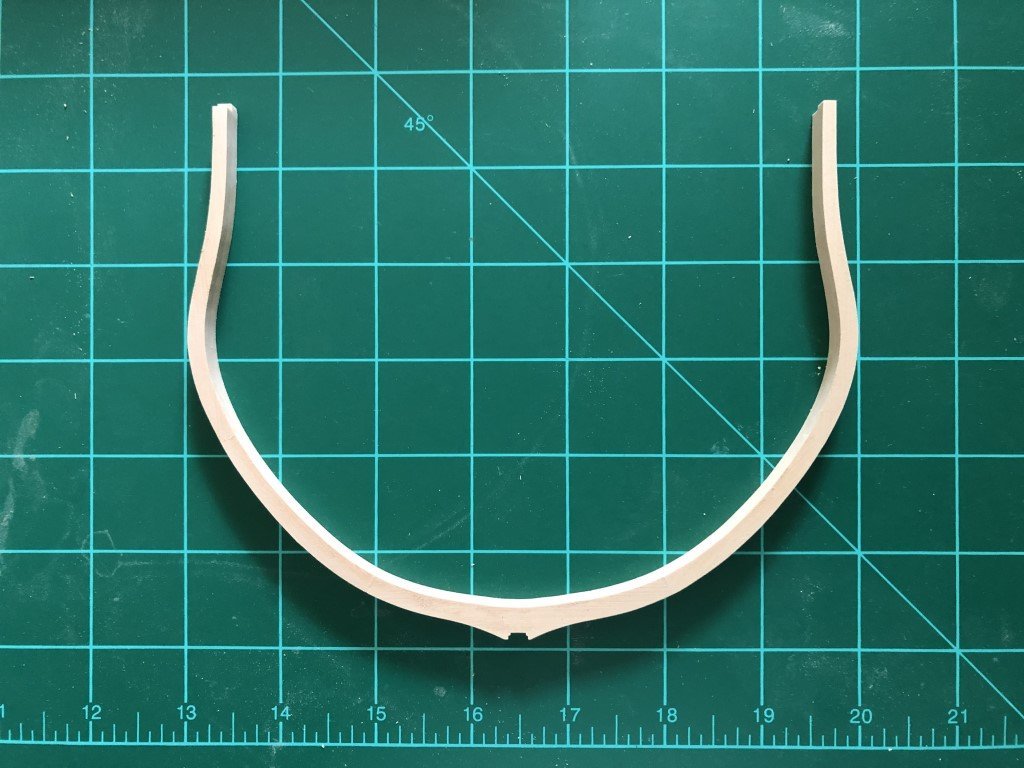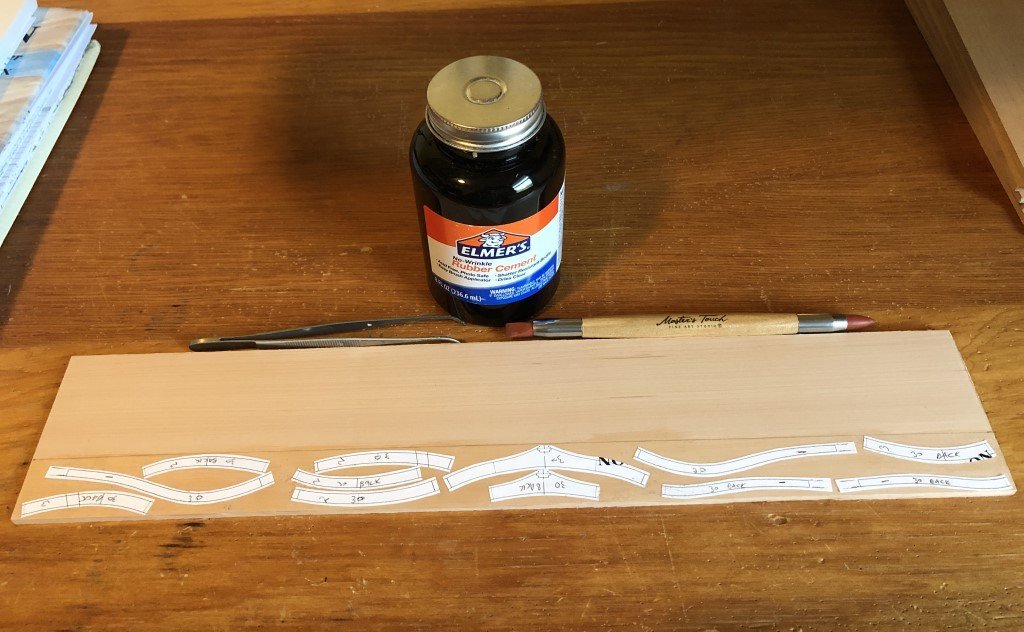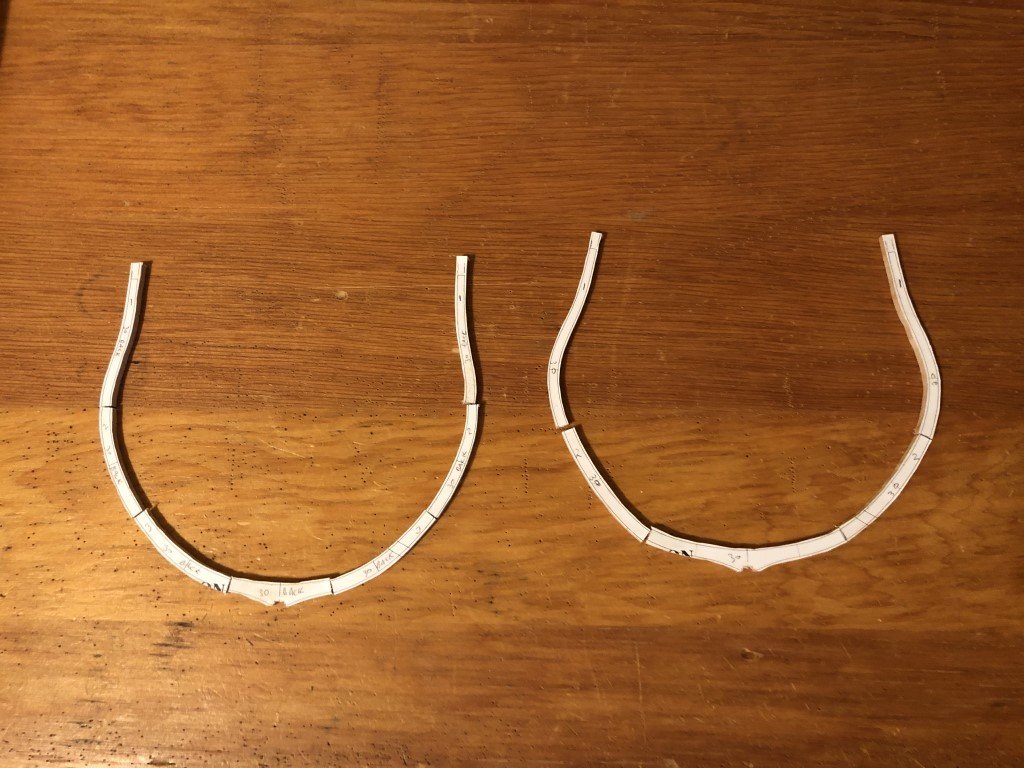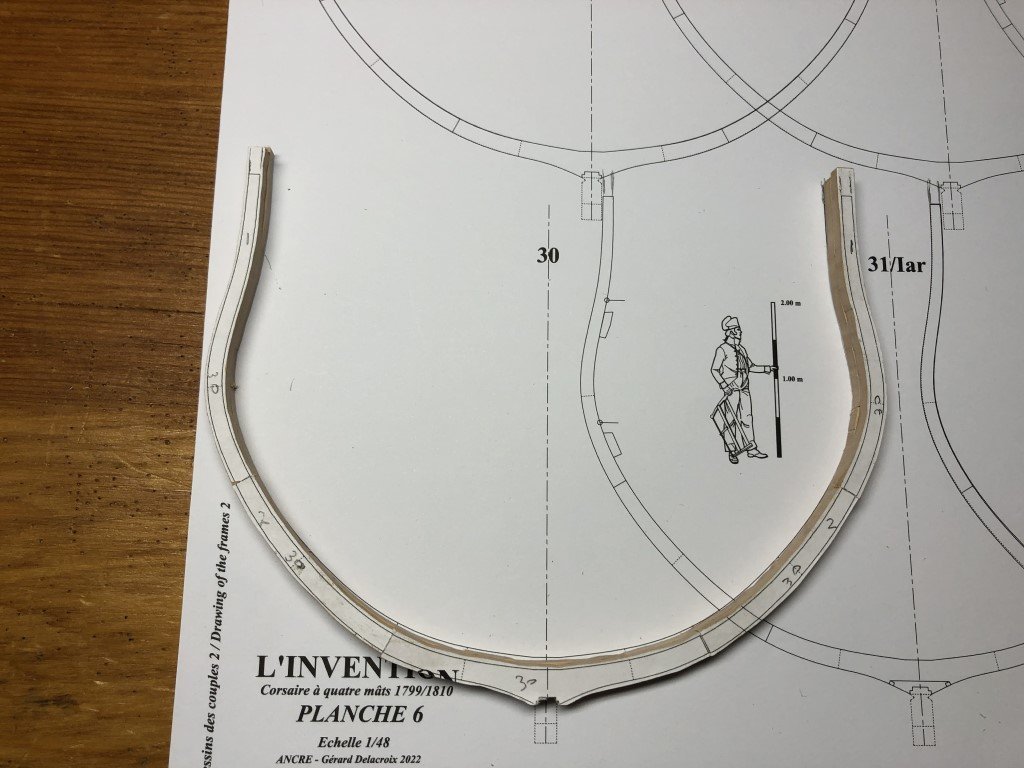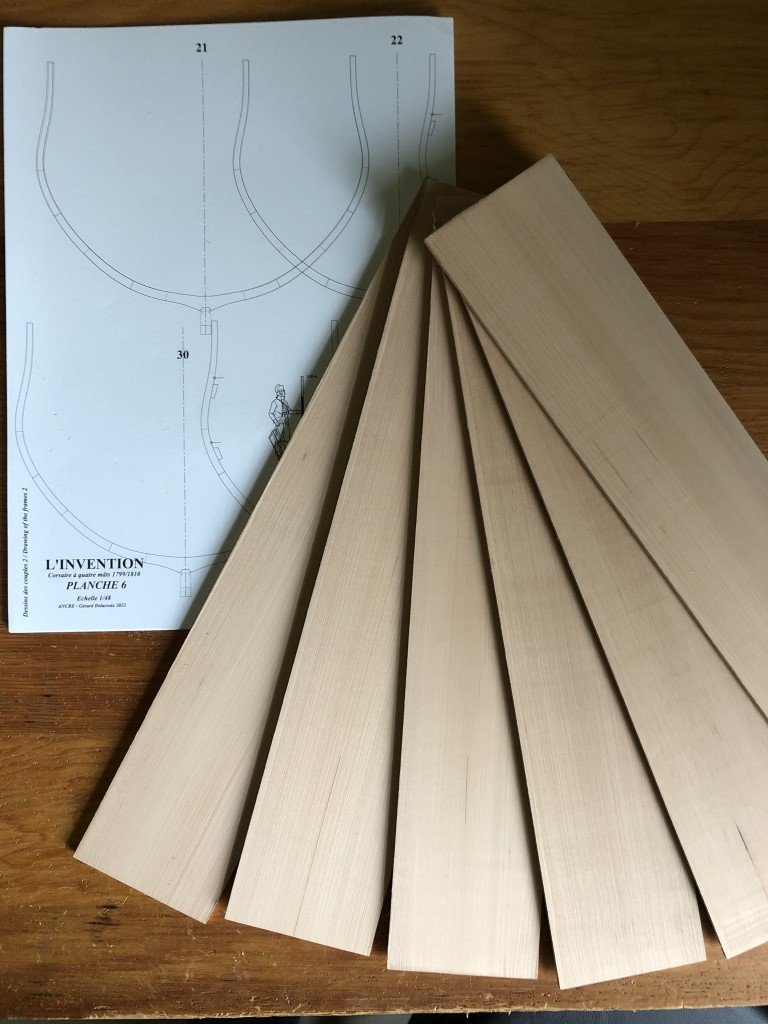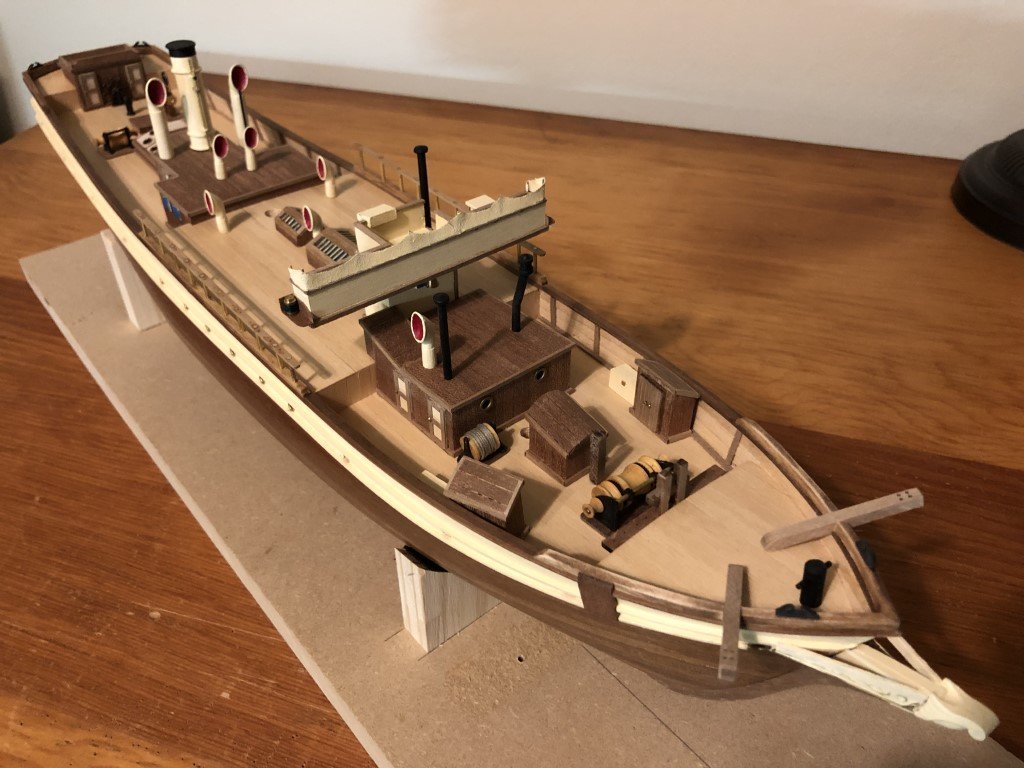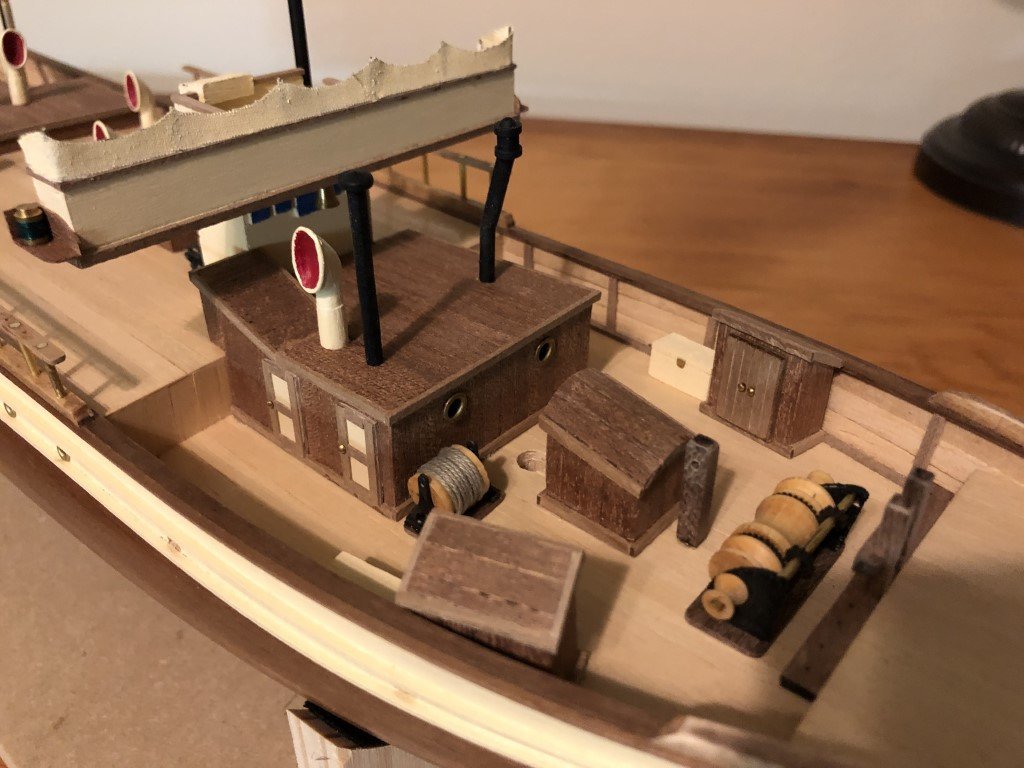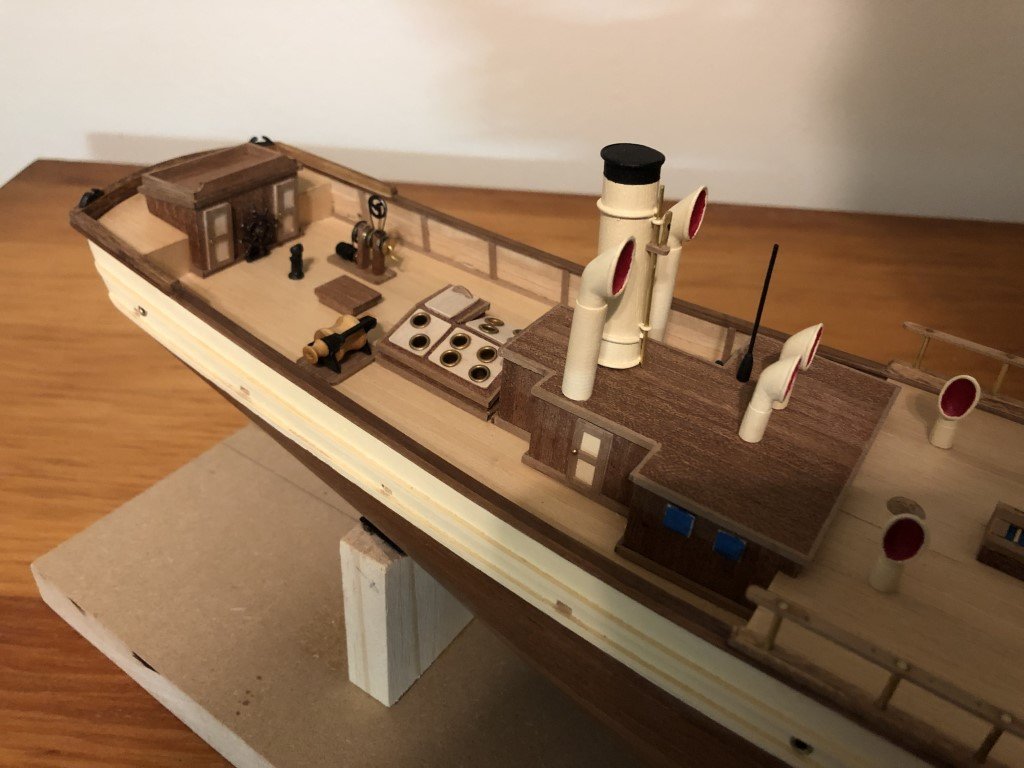-
Posts
805 -
Joined
-
Last visited
Content Type
Profiles
Forums
Gallery
Events
Everything posted by Greg Davis
-
I've assembled the jig for bending the ribs. It is made out of siz pieces that are laser cut from a sheet of MDF. All of the pieces released from the sheet with ease. The completed jig looks like this: Bamboo strips will be threaded thru the holes on the two ends allowing them to be bent to the proper camber. The instructions say to place wet paper towels over the strips for about an hour. Then the builder is directed to dry the pieces with a hairdryer. The ribs can then be removed and will hopefully maintain the desired camber. Apparently 34 of these need to be made, so the jig needs to be fully loaded twice. I hope to load the jig up tomorrow to make the first batch. Also, to give you an indication of the size of the model, the cord of the wing is just over 6 inches - the original plane would have had wings approximately 8 feet wide.
-
Earlier this year I had sworn off ModelExpo; however, last week I opened their site and noticed that they had released a new Model Airways kit - Santos Dumont 14 bis (1906). This plane is of great historic importance, being the first powered plane to fly in front of an audience. Built and flown by Brazilian Santos Dumant and flown in a suburb of Paris, the plane was able to win aviation prizes for first plane to have a flight of 25 meters and then of 100 meters or more. I understand that many individuals, including most of Brazil, believed that this plane was the first heavier-than-air-aircraft to be piloted (as opposed to the Wright Brothers). I placed an order for the kit 3 days ago and it made it to my doorstep today. Opening the box, the contents are nicely packaged, but a bit sparse compared to a ship kit! There is one big / full-size plan: Compared to later designs, this plane always looks like it is going backwards to me. The wings / engine / cockpit are in the back. An eight cyclider engine provides power to a 'pusher' propellor. The instruction manual looks to be well done. Interestingly, it is here that you find out that the kit is actually produced by Nauticurso. Here is a typical instruction page (of which there are about 35): There are then a dozen additional pages of full-size plans in the manual: Back to the material content of the kit. There are several bags containing metal castings, fasteners, rigging line, etc. An inital look at the castings is mostly positive, but more will be known when it comes time to see how they fit together. It is disappointing that the wheels and tires have been cast together - one would expect that the tires would have been rubber. The propellor casting concerned me a bit until I read (elsewhere) that the actual blades were aluminum; I had wrongly guessed / assumed that they would be wood. There are a few sheets of laser cut pieces and a small sheet of photo-etched brass parts: But the bulk of the wood products are assembly jigs: At the bottom of the previous picture are a bunch of bamboo dowls that make up most of the plane's structure. Within the instruction booklet is a link to Nauticurso's YouTube channel that shows how one can use rigging line to simulate the ridges seen in real bamboo. This had been done for the (prototype?) model in the instruction booklet, e.g.: All in all, while there are obvious limitations, the kit looks like it will be a nice diversion and should deliver an interesting final product.
-
I thought that I would post a note indicating that I have not abandoned this project! Through the summer, I had been involved in a great deal of work on our house - it turns out that a lot of projects needed to be done after living here for 20+ years that you don't notice as much when you are working. As the weather gets cooler, there are fewer big outdoor projects to tackle and the number of indoor projects has been shrinking dramatically. I will also note that I am about to start yet another modeling project - a quick diversion - the new Model Airways kit of Santos Dumant 14 bis. But most importantly, I will be back to work on L'Invention very soon.
-
I've temporarily pinned the spars to the masts. They are not staying right where they belong, but it is giving me an idea of how much space this model will take up. Not too wide, so when cased it should easily fit in the office it is destined for. I guess it is time to get the lower deadeyes in place so that the rigging process can really get underway.
- 123 replies
-
- Le Pourquoi-Pas
- Constructo
-
(and 1 more)
Tagged with:
-
Here are the eight spars for the main and fore masts. I believe that all the needed blocks and brace pendants are in place.
- 123 replies
-
- Le Pourquoi-Pas
- Constructo
-
(and 1 more)
Tagged with:
-
Got a little behind when I broke a couple of soft metal cleats. It turns out that getting replacement cleats of the same size proved to be a bit of a challenge. Fortunately, I found what I needed for a far price and quick overseas delivery from Cornwall Model Boats! So the cleats are on, as are all of the mast blocks: What are the chances I will cut all of the waste material and not any of the block attachements on the main and mizzen masts?
- 123 replies
-
- Le Pourquoi-Pas
- Constructo
-
(and 1 more)
Tagged with:
-
- 123 replies
-
- Le Pourquoi-Pas
- Constructo
-
(and 1 more)
Tagged with:
-
All of the chain-plates are attached. I spent some time making around 150 eyebolts out of 28 gauge black annealed wire to replace the supplied eybolts. All the eyebolts on the deck / hull have been attached. I've also assembled and attached the bowsprit - now the ship is a bit longer! I think the dolphin striker / martingale will come next along with rigging of the bowsprit. Slow but sure (i.e., haven't been spending a great deal of time with the model lately). Some time has gone to sprucing up my basement power tool area. It is region about 14' x 20' in terms of useable space. There are also indentations at the back where some nice cabinets are going. The flooring is all in now, but a bit of wall trim is still needed before moving everything back in. I'm also suppose to put up some kind of sound barrier on the open end - apparently there is some noise that makes its way upstairs!
- 123 replies
-
- Le Pourquoi-Pas
- Constructo
-
(and 1 more)
Tagged with:
-
I've installed the chainplates (and painted the mid-portion of each to match the upper hull color) on the port side of the model. I've tried to mimic the method of chainplate installation used on the actual ship as opposed to the method presented in the instructions. In the following image, you can see that the chainplates do not come into contact with the hull between the two guard rails - this is how I've placed the chainplates on the model. I wish I had seen this picture much earlier in this build as the upper guard rail location is much higher than where I placed it (based on the kit instructions). On to the starboard side! Once the remaining 21 chainplates are in place, I plan on adding the eyebolts need on the deck and on the hull exterior. The kit instructions call for the model builder to bend the chainplates over each of the guard rails in a way that brings the chainplates tight to the hull in three locations. On to the 21 starboard matching chainplates. Once they are installed, I plan on making and installing the deck and hull eyebolts as well as the lower 42 deadeyes.. After that, I expect that making and fitting the bowsprit will be in order. So many 'little things' to be done before the rigging begins!
- 123 replies
-
- Le Pourquoi-Pas
- Constructo
-
(and 1 more)
Tagged with:
-
Keith- That is exactly what I was planning on doing! Thanks for alerting me to your new HMS Erebus build - looks like the initial work is going nicely and swiftly.
- 123 replies
-
- Le Pourquoi-Pas
- Constructo
-
(and 1 more)
Tagged with:
-
Slow going lately - family visits and house projects have taken precedence! But the lower masts and tops are done, as well as painting a couple of the doublings. I should be able to get a good feel for where all the chain plates belong now. I think that I should do that work before extending the masts as the top portions will be fragile before rigging is added.
- 123 replies
-
- Le Pourquoi-Pas
- Constructo
-
(and 1 more)
Tagged with:
-
The last couple of days I have been working on the fore and main mast tops. It has been taking more effort than expected. Bending the 2x2mm material to create the outer edge has been problematic for me. A lot of heat and water, but the wood has been quite resistant to bending into the correct shape. To help for this shape I made a mold to let the bent wood dry inside of for a day. This is (hopefully) going to be the piece needed for the second top. The first top doesn't look too bad. I don't think I will be able to do better with the supplied material, so it is going to become part of either the fore or main mast in the near future.
- 123 replies
-
- Le Pourquoi-Pas
- Constructo
-
(and 1 more)
Tagged with:
-
I know its been awhile and I had said I would be spending more time with this model; however, I started another and got a bit caught up in the new build. After finishing the dredger model, my confidence level went up a notch and I started into building L'Invention from the ANCRE monograph. It's a big project - a four-masted privateer constructed in 1799 - and I'm having fun with it, but I need to get this one done and gifted. Over the last couple of days I fitted cleats to the bulwarks - while doing this, I admonished myself a few times for not putting them in before the deck furniture! Skids for the two fore and two aft ship's boats are in place, as are the six ladders for going from deck to deck. I've also started on the lower masts. I want to get the masts assembled so that I can better locate the positions for the chain plates. After going back and looking at photographs of the actual ship I noticed that the chain plates should thread through the rails. I wish I had made that observation earlier as I could have made slots when I was laminating the rails. Now I can't think of a way to introduce thin rectangular slots in rails that will have a really good chance for success - there are 42 chain plates to deal with. So either they are going on the outside of the rail or I will make notches in the rail for them to be embedded. I guess I'll need to make a decision soon. In the meantime, here is how Le Pourquoi-Pas? looks this evening: Hopefully more soon!
- 123 replies
-
- Le Pourquoi-Pas
- Constructo
-
(and 1 more)
Tagged with:
-
Here the final 5 Type B frames are drying between glass plates. So all 34 of the type A and B frames are now assembled. Now I can decide between preparing more 4mm thick material and assembling the Type C frames or spending some time standing at the spindle sander and finish sanding what is already assembled. This evening I'm thinking the spindle sander might be a nice change of pace!
-
All 25 of the 'Type A' full frames are assembled now. I have turned my attention to roughing up the 'Type B' full frames with their two-piece floors. I'm finishing assembling frames 9 - 12 this evening. When done I will have half of the frames assembled. I decided to cut some wood so it wood have a 'V' shape when glued together. The templates for the larger floor pieces were then lined up and cemented over the joint. I felt this would be easier than cutting the 2 halves of the floors and then joining them. Similarly, wood was prepared with a horizontal joint for the smaller floor pieces. Here's what the backside of the pieces for frame 10 looked like after cutting them out The joint on the larger piece is clearly visible; but that on the smaller is hard to find as the grain is so fine and straight. Perhaps the horizontal joint will show up better after a finish is applied and there is a chance for the finish to seep into the seam. If not, I still know the joint was made! Five more to go and then onto 'Type C' frames. There are then 10 additional frames to arrive at the required total of 59 frames for this ship.
-
A quick progress update - spent some time with the scroll saw today and have cut out parts for frames 13 - 20: Once assembled, I will have put together frames 13 - 37. These are the ones that were my first goal to complete. (Of course sanding / shaping will take a few hours to give them their final shape). In the meantime the pile of frames continues to grow: The next set of frames that I will work on will be 9 - 12 and 38 - 42. These 9 frames will have 2 piece floors of a certain type. The remaining 20 full frames (2 - 8 and 43 - 52) also have 2 piece floors, but of a different design.
-
The work will be repetitious for quite awhile, but I thought I would put a note here that progress is being made. I feel that I am getting the hang of making these full frames. With the size boards that I had prepared I can make the rough frames in batches of 3. I cut out the templates in the evening, rubber cement them to the board, and then let them set to the morning. During the day, between working on house projects I find time to cut out the 36 pieces on the board and mill the 6 floor notches. Later I find time to square up the ends of the pieces with the table saw and glue up the 3 frames. After the three are between glass plates it's back to making the templates and preparing wood to cut the next day. When I feel like taking a break from the frame assembly line, there will be plenty of finishing sanding opportunities to obtain the molded dimensions. So far the work is pleasant and going well and I expect that I will be ready for the more complicated frames when the time comes!
-
This morning, frame #30 got some refinement on the spindle sander. It matches up nicely with the plans and will be labeled set aside in a safe place while the remaining frames are manufactured. In this picture you can get some idea of the cross-sectional dimensions that the model will have. This frame is nearly 7" ~ 18cm at its widest, and about 5" ~ 13cm high (not counting the 1 extra cm at the top of the frame). Here again I've followed the guidance of Frolich in extending the frames an additional 1cm so that shaping and the attachment of ribbands near the top will be more easily and precisely managed.
-
This evening I had time to 'try out' the sheets of pear. I have made good progress on frame #30 - I started here because there was little bevel to the frame. I will be working fore and aft starting with the flattest least complicated frames and moving toward the more difficult ones. I feel that they will go better once I get a good feel for the required part sizes and how the wood works as this is my first try with pear. Here's the process that I will be following for a good number of weeks (months?): Made copies of the frame, cut out templates for the 12 needed parts, and rubber cemented them to a sheet of wood. Cut the parts out with a scroll saw and milled the juncture with the keel. Glued up the pieces with white carpenter glue - here I'm basically following the instructions provided in 'The Art of Ship Modeling' by Bernard Frolich. I've placed the glued up frame between to heavy sheets of glass. They will stay there for a good 12 hours. Once nice and dry, the frame will be sanded back close to the final molded shape.
-
Ok - it has been slow getting started. For the last week or so we've had both of our kids home for a visit (with grandkids and dogs); with 7 people and 5 dogs running around there was not much time to think about ship building. But I've prepared some material for the frames - got to use the table saw, band saw, and thickness sander a bit. I now have six sheets 3" x 18" of 4mm wood to layout the various pieces of the frames. The frames should be made out of 189mm / 48 = 3.9375mm material. Once the two halves are glued together just a little final sanding will bring the structures very close to the desired 7.875mm thickness.
-
Now nearing completion of adding deck structures. The fore deck has all the details now that a couple of chests have been put in place. Going aft, the aft deckhouse is in place, as is the ships wheel, one of the binnacles (the other being on the observation structure), a companionway, a structure over the engine (I think the hatch on this structure may have been where coal for the boiler was loaded), ... . It sure is getting to be a crowded deck; there doesn't seem to be any space that is underutilized. There were 30 individuals on the 1908-10 expedition. The crew was 22 and the staff members were the remaining 8 - three naval officers, a geologist, two naturalists, a doctor, as well as Charcot who headed the expedition and was a bacteriologist. Currently, I am working on 8 sets of stairs / ladders for traversing from one deck to another. I've blackened all of the cleats and will start attaching them to the inner bulwarks soon. Once that is done the beams to support ship boats can be added. This will then pretty much complete the hull and deck work. It will then be time to begin masting and rigging - I am looking forward to the next steps as I find rigging to be particularly satisfying!
- 123 replies
-
- Le Pourquoi-Pas
- Constructo
-
(and 1 more)
Tagged with:
-
With respect to the ships boats I ordered from Model Expo. You would expect that such a company would honor their online marketing - especially for something so inexpensive. One of their tenants has been 'replace missing or broken parts' for their models! Fortunately there are other places to do business.
- 123 replies
-
- Le Pourquoi-Pas
- Constructo
-
(and 1 more)
Tagged with:
About us
Modelshipworld - Advancing Ship Modeling through Research
SSL Secured
Your security is important for us so this Website is SSL-Secured
NRG Mailing Address
Nautical Research Guild
237 South Lincoln Street
Westmont IL, 60559-1917
Model Ship World ® and the MSW logo are Registered Trademarks, and belong to the Nautical Research Guild (United States Patent and Trademark Office: No. 6,929,264 & No. 6,929,274, registered Dec. 20, 2022)
Helpful Links
About the NRG
If you enjoy building ship models that are historically accurate as well as beautiful, then The Nautical Research Guild (NRG) is just right for you.
The Guild is a non-profit educational organization whose mission is to “Advance Ship Modeling Through Research”. We provide support to our members in their efforts to raise the quality of their model ships.
The Nautical Research Guild has published our world-renowned quarterly magazine, The Nautical Research Journal, since 1955. The pages of the Journal are full of articles by accomplished ship modelers who show you how they create those exquisite details on their models, and by maritime historians who show you the correct details to build. The Journal is available in both print and digital editions. Go to the NRG web site (www.thenrg.org) to download a complimentary digital copy of the Journal. The NRG also publishes plan sets, books and compilations of back issues of the Journal and the former Ships in Scale and Model Ship Builder magazines.


